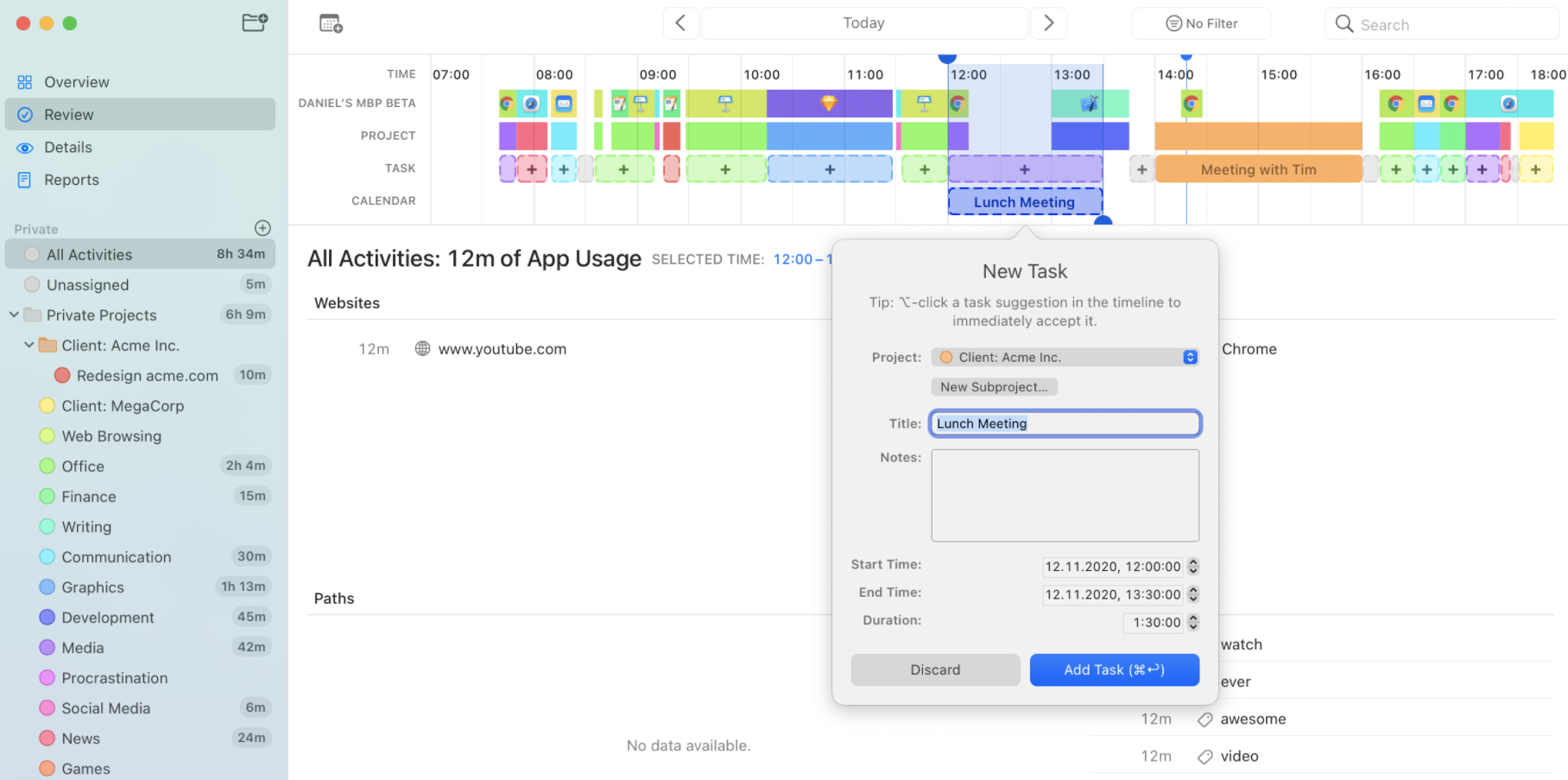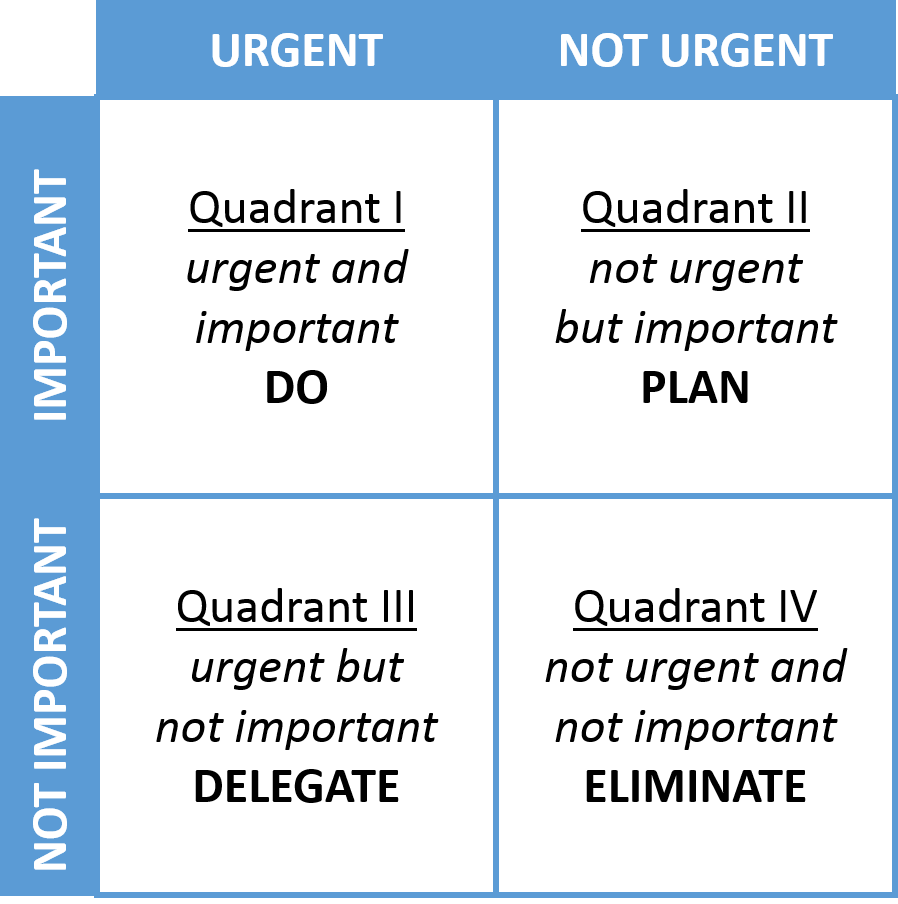8 Tips for Better Time Management for Freelancers

As a freelancer, your time is everything. The faster you can complete projects (without sacrificing the quality of the work), the more money you can make. “Time is money,” as they say.
Adding hours to your day isn’t the only way to make more money. If you can complete projects faster without wasting precious time, you can schedule more projects, and thus make more money. If you waste time, therefore, you’re actually throwing money out the window. So it’s critical that you take time management seriously.
“But I work for myself,” you might be thinking. “I want freedom and flexibility. I don’t want a boss standing over my shoulder making sure I’m working diligently, so why would I do that to myself?”
That’s a fair sentiment, but good time management doesn’t mean putting yourself under a lot of stress. It doesn’t necessarily mean working extra hard, either. It just means working smartly.
So how do you improve your time management and truly optimize your workday as much as possible? In this article, we’ll explain how with a collection of time management tips for freelancers.
As a freelancer, your time is everything. The faster you can complete projects, the more money you can make. Share on X
Time Management Tips for Freelancers
Whether you’re just getting started as a freelancer or you’ve been doing it for a long time, it’s important to make your workday as productive as possible. These time management tips for freelancers will help.
1. Track Your Time
The first tip is the most obvious but also the most important. This tip will make all of the other tips on this list more effective. Frankly, if you aren’t tracking your time, you’re leaving a lot of money on the table.
Time tracking is the only way to find challenges and inefficiencies in your workday. You can’t review your performance to find ways to improve your time management if you don’t really know how that time was spent. This means you need a time tracking app that not only tracks how long you’ve been working, but what you’ve been working on.
Timing is a powerful time tracking app that automatically tracks everything you do, including every app you use and browser tab you open. You can see how you spent your time and how productive you were. There’s no need to click “start” or “stop” buttons to engage and disengage the timer. It’s always working for you.

Timing’s dashboard gives you an overview of how your time is distributed across your projects. It even shows when you are most productive, so you know when you do your best work. You can look through your analytics at any time to measure your performance.
For instance, after completing a project, you could go back and examine how you spent your time. Did you work on tasks efficiently? Did you complete tasks in the wrong order? Did you allow other projects to interrupt your workflow? These factors – and others – are only identifiable with quality time tracking software.
Grab your free trial of Timing now.
2. Use the Pomodoro Technique
The Pomodoro Technique was developed in the late 1980s by Francesco Cirillo. Cirillo was feeling overwhelmed by his studies and assignments, so committed to just 10 minutes of focused work by using a tomato-shaped kitchen timer to track his time. (Tomato is “pomodoro” in Italian…;later, he wrote a full book on his technique.)
The Pomodoro Technique is a handy time management method to focus during work time. It uses sprints of work with frequent short breaks to limit distractions and sustain your concentration. It also helps avoid mental fatigue (that feeling you might get at the end of the day when you don’t want to use your brain anymore).
This method is especially useful if you constantly find yourself working past the point of productivity, if you are often beset by little distractions that take you off course, or if you have lots of open-ended work that could take unknown amount of time to complete (like brainstorming ideas or conducting research)
The technique is quite simple. It works like this:
- Pick a task.
- Set a 25-minute timer.
- Work on the task until the timer expires.
- Take a five-minute break.
- Repeat steps one through four.
- After four cycles, take a longer 15-30 minute break.
Additionally, there are three rules to follow:
- Break down big projects into smaller projects. If the project requires more than four pomodoro cycles, it should be broken into smaller components. This way you are always making progress on your projects.
- Group small tasks together. If a task requires less than one pomodoro cycle, combine it with other tasks. Ideally, these tasks should be as similar as possible. For example, creating and sending invoices are separate tasks, but they can all happen during the same pomodoro cycle.
- A pomodoro cycle can not be broken. Once you start the timer, do not stop working until it rings or you finish all of the scheduled tasks. Further, do not deviate from your task list. Don’t check your text messages, emails, or Slack channels. Any new tasks or ideas that pop up should be noted to be added to a later pomodoro cycle.
The Pomodoro Technique isn’t for everyone, but it’s a powerful tool for anyone who struggles with focus and staying productive. If you give a try, use it for at least eight cycles (about a full work day) before giving up.
3. Use the Eisenhower Method

The Eisenhower Method (also called the Eisenhower Technique or the Eisenhower Prioritization Matrix) was reportedly used by President Dwight Eisenhower. It’s a useful tool to focus your work on what’s important. It prevents you from spending time on tasks that don’t add much value to your work and clients.
Using the matrix is simple. Start by plotting your tasks to each quadrant.
- The top-left quadrant is for tasks that are urgent and important. These are the most important tasks in your life that would cause you stress or loss of income if they weren’t addressed quickly.
- The top-right quadrant is for tasks that are important, but not urgent. For example, asking clients for referrals is an important part of freelancing, but there’s rarely a deadline for it to happen.
- The bottom-left quadrant is for tasks that are urgent, but not important. For instance, let’s say you have one day to commit to a new client, but the account isn’t worth much money. It’s urgent, but it doesn’t add much value.
- The bottom-right quadrant is for tasks that are neither urgent nor important. Changing your social media profile image, for example, has no deadline or importance.

Once you’ve plotted your tasks in each quadrant, start with the tasks in the top-left box. These signify the most impact with the shortest deadlines, so they deserve priority.
Plan to-do tasks in the top-right box. You don’t have to do them right away, but they need to be done at some point.
Tasks in the bottom-left box should be delegated away. Can you hire a virtual assistant to handle them? Can you outsource them to another freelancer? Can they be automated by a software tool?
Finally, eliminate the tasks in the bottom-right box. They offer no little value, so they aren’t worth your time. (If eliminating a task makes you anxious, that probably means it belongs in one of the other three boxes.)
Ultimately, this system improves your time management by removing tasks from your plate. This way you can focus on the ones that create the most value to your business.
4. Don’t Make a Huge Task List

Like a lot of freelancers, you probably use an old-fashioned to-do list to keep you on track. This is a good time management strategy, but adding too many tasks to your list can be daunting. It might make you feel that there’s an endless amount of work ahead of you, so what’s the point of working hard?
A task list shouldn’t include everything you have to do. It should represent a “sprint” that you intend to get through before the work day or period is over. This means a task list should be bound by some timeframe, like your work day. It should only include the tasks you hope to achieve within the work day.
Organizing a task list like this gives you something to strive for. You’re more likely to keep pushing forward when there’s a clear end in sight. Crossing off the last item on a list is especially satisfying. It represents one less task on your plate, more revenue in your bank, and a day of work complete.
This doesn’t mean you’re limited to your daily list, of course. If you finish a day’s task list by 1 PM, you may pull a few more items from your comprehensive list. Or you might get a headstart on tomorrow’s list. But don’t make your entire life about work. If you finish early, don’t be afraid to take a few hours off.
5. Break Big Tasks Into Smaller Tasks
“How do you eat an elephant? One bite at a time!” It’s a silly phrase, but it packs a lot of meaning. Big projects can seem overwhelming at first, but they’re actually quite manageable once you break them into smaller pieces.
“Breaking tasks down helps us to see large tasks as more approachable and doable, and reduces our propensity to procrastinate or defer tasks, because we simply don’t know where to begin,” says Melissa Gratias, PhD, a workplace productivity coach and speaker.
Plus, breaking big tasks into smaller tasks can help with planning and strategy. It’s easy to optimize your work and spot mistakes when the whole project is laid out before you on the page. This is also an opportunity to look for patterns.
For instance, you might notice that you can complete task #5 and task #9 at the same time. Or you might see that task #13 will require a time delay (perhaps you have to rely on another person), so it’s best to handle that task first. These are key time management tips (and big time savers) that you can only see once the project is broken out.
Furthermore, when you break those big projects down, give each item your own deadline. This will help keep you on track (so you don’t use the flexibility of your lifestyle as a reason to procrastinate). For instance, you might try to have task #1 finished by 10:30 AM, task #2 finished by 1 PM, and task #3 finished by 2:30 PM.
6. Decline Projects or Clients that are too Demanding

When you work for yourself, it’s tempting to take every project that comes your way. Work isn’t guaranteed, so you want to take everything that comes your way. You never know when you’ll find yourself stuck in a dry spell.
This mentality causes a lot of freelancers to take on projects and enter into relationships that demand too much of their time. In the end, they end up working far more than they would like to. Other projects and clients suffer, not to mention the freelancer’s mental health.
Therefore, smart time management for freelancers means declining work and projects that would disrupt your schedule. If an opportunity would take up too much time or require an unreasonably short deadline, it’s best to say no. Let the client know that you don’t have enough space in your schedule at the moment to meet their request. If you’re tactful, you can decline work without burning bridges with potential clients.
One solution is to outsource the work to another freelancer. This way someone else handles the project, but the client comes back to you next time. Another strategy is to refer the client to another freelancer that you trust. Ask him or her to refer the client back to you next time. You can also provide them with a referral link and ask them to use it when working with the recommended freelancer. In doing so, you create a mutually beneficial referral system, increasing the likelihood that the client will refer the business back to you next time. If you want to encourage more referrals, you can also use referral rewards platforms to manage incentives for your clients to refer new business to you.
That said, it also helps to be honest with the client about your schedule and willingness to take on a bigger workload. It’s okay to set clear boundaries, such as “I don’t work past 6 PM” or “I’m unavailable on Sundays.” If the clients are flexible, they may be willing to accommodate your needs and preferences by pushing out the timeline or increasing the budget so you have room to outsource the work.
One of the greatest benefits to the freelance lifestyle is freedom. No one can tell you what to do or when to work. Don’t waste that freedom by forgetting that you are the boss of your business.
7. Set Reminders and Notifications

In order to manage your time, it’s important to recognize your own limitations. Like everyone else, you’re bound to forget things from time to time. No one’s memory is perfect. The only way to ensure that you meet your deadlines and show up for your meetings is to set reminders for yourself.
The type of reminder you set will depend on the nature of the task. Some tasks require a reminder just a few short minutes before the task. For instance, a reminder to follow up with your designer on that website mockup only needs to go off a few minutes before it’s time to send the email.
Other tasks require deeper reminders. For example, you might set a reminder one day before a big presentation to remind you to practice one more time or give your notes a final edit. You might then set two more reminders at 15 minutes and 5 minutes before the meeting to make sure you appear on time. These cases are more important so the reminders should be more insistent.
8. Use Your Most Productive Hours
Like most people, you don’t work with the same intensity and focus throughout the entire day. Some people are early birds. Others are night owls. Most of us can work on simple tasks well enough throughout the day, but we struggle with intensive tasks during certain hours.
For instance, you might be great at creative work in the early hours, from 8 AM to noon, but then lose your focus after lunch. It makes sense, therefore, to spend those morning hours on creative tasks and leave the boring administrative stuff for the end of the day.
You might prefer to draft emails and write longform articles after 5 PM when everyone stops bothering you. Maybe you like to get your little tasks out of the way early so you can devote the afternoon to intensive work. Or you might simply prefer to work all night and sleep the day away.
Everyone is different, but it’s important to discover how you work best. You’re a freelancer, which means you control your commitments and your work schedule. You aren’t bound to a desk from 9 AM to 5 PM. Your tasks aren’t ordered by some manager.
In many cases, freelancers find productivity success simply by rearranging their schedule to something that suits them better. To make this work, however, you have to be willing to stick to your new rules. For example, if a client wants a 4 PM meeting but you don’t schedule calls for the end of the day, have the courage to deny the client’s request and offer an alternative.
Wrap Up
We’ve given you a collection of tips regarding time management for freelancers. Our advice will help you manage your time so you can work productively without sacrificing quality. Use the spare time to add more projects to your schedule (and make more money) or take some time off yourself. There’s no reason to work hard when you can work smart.
